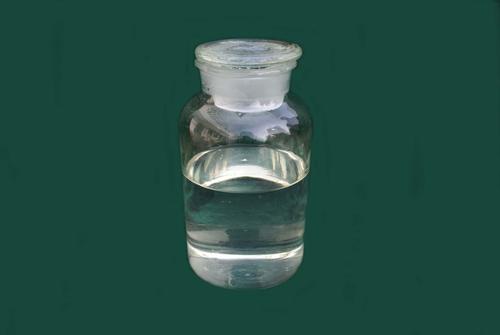Epoxy compounds used as plasticizers mainly include epoxy fatty acid glycerides, epoxy fatty acid other esters and epoxy tetrahydrophthalate There are three types of acid esters. They generally use unsaturated esters as raw materials and are oxidized with peroxyacid. Since peroxyacids are unstable, hydrogen peroxide, carboxylic acid and reactants are usually added together during the reaction. So that as soon as the peroxyacid is generated, the reactant will be epoxidized.
Also, under the action of a catalyst, acetic acid is first oxidized with air to generate peroxyacetic acid, and then epoxidized with the reactants. In addition to peracetic acid, peroxyformic acid is a stronger epoxidizing agent.

The representative variety of epoxy fatty acid glycerides is epoxidized soybean oil:
Since soybean oil is a fatty acid ester of glycerin, its fatty acid composition is 32% to 36% oleic acid, 52% to 75% linoleic acid, and palmitoyl acid. Acid 2.4% ~ 6.8%, stearic acid 4.4% ~ 7.3%, therefore, its composition is relatively complex.
Epoxy fatty acid glycerides have good heat resistance and weather resistance, low volatility, low migration, good compatibility with PVC, and PVC plasticization The agent is mainly used for heat-resistant wires and agricultural films. also. Since they are non-toxic, they are also used in food packaging materials,
Epoxy fatty acid monoesters vary depending on the source of fatty acids (grease) and the raw material alcohol used. The role of plasticizers is such as oxidizable butyl soybean oleate, epoxy butyl stearate and octyl ester. Epoxy fatty acid monoesters are mostly light yellow transparent liquids. They have good low-temperature properties and can be used as cold-resistant plasticizers, but their migration is relatively large.
Epoxy tetrahydrophthalate is a diene addition reaction between 1,3-butadiene and indium maleate. Hydrogen o-jamadicarboxylic acid liver is prepared by esterification and finally epoxidation.
Epoxy tetrahydrophthalate not only has the comprehensive properties of phthalates, but also has excellent weather resistance as an epoxy plasticizer , good heat resistance and other advantages.
The commonly used one is EPS (dioctyl epoxy tetrahydrophthalate), which is a colorless to light yellow oily liquid. Its plasticizing effect is the same as DOP is equivalent, non-toxic, mildew-proof, has excellent light and heat stability, and can be used in films, sheets, artificial leather, cable materials and various molded products.

 微信扫一扫打赏
微信扫一扫打赏

